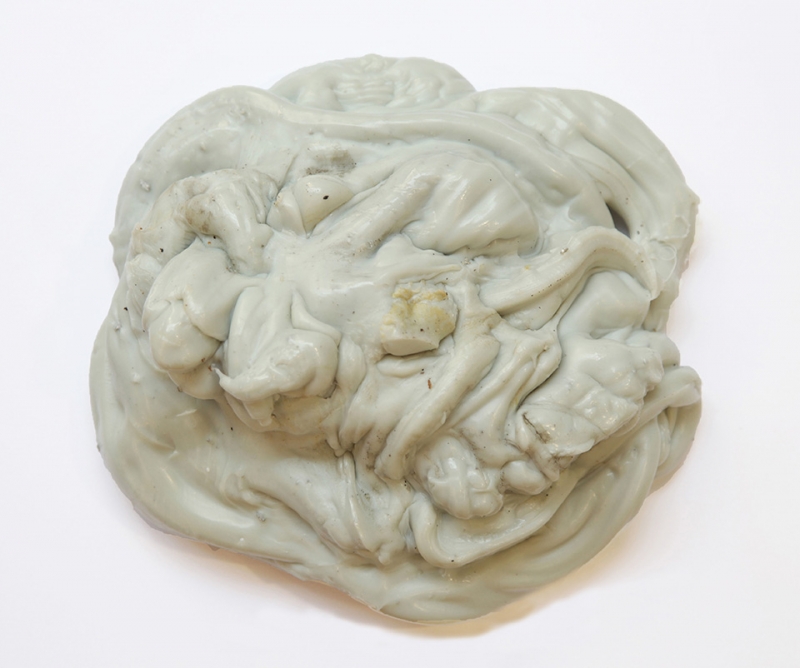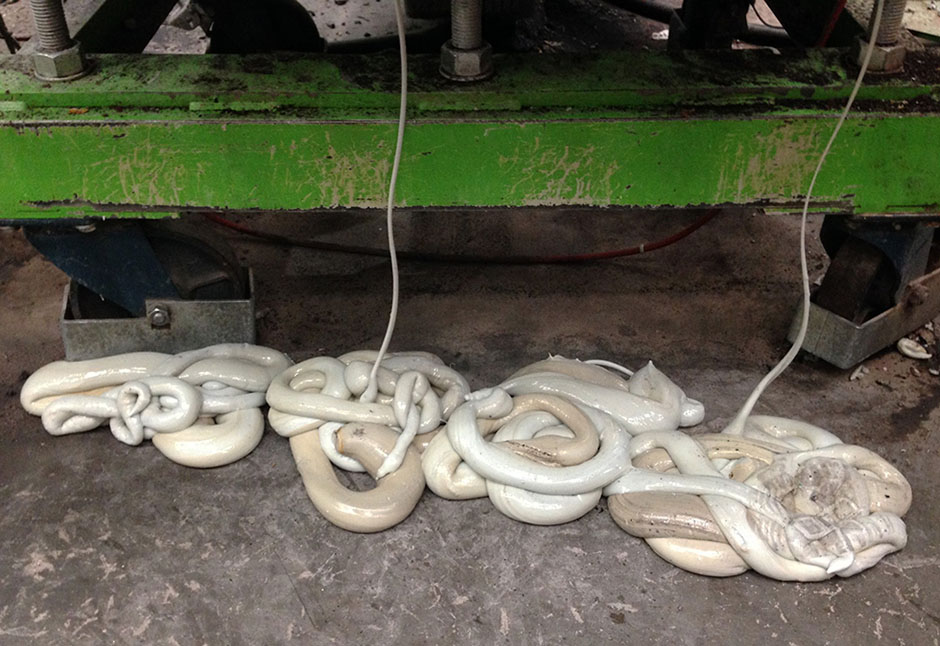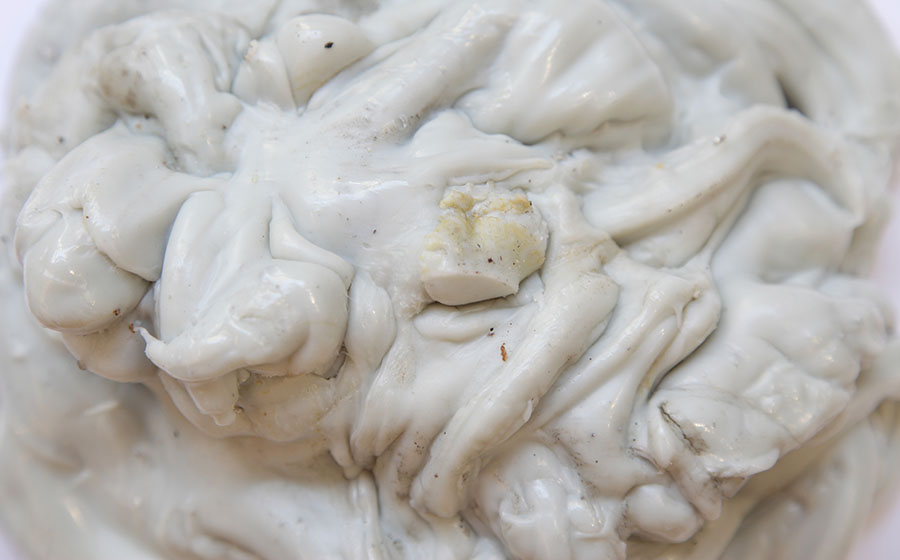Curious Matters: HDPE Plastic Waste
02 April 2014

This slightly green tinted, meringue-shaped blob is a sample of HDPE waste material, and is produced during the process of recycling HDPE plastic from used milk bottles into food-grade standard material. After passing through a colour sorter to remove any coloured flakes - which most normally originate from milk bottle caps - the natural HDPE is processed back into standard pellet form. This is achieved by using a vacurema, which treats the flake under high temperature and low pressure. Heating the flake to temperatures of over 200°C turns it to molten form and eliminates any contamination. The molten plastic is then extruded, filtered, cut into small pellets and cooled. These pellets are then sold on to make new milk bottles of various recycled content (commonly between 25% and 50%). It is during this final extrusion process where waste material, such as this sample, is excreted out of the extrusion machine, spilling out onto the factory’s floor. Officially, these meringue-shaped blobs of plastic, initially very warm to the touch, are collected to cool and eventually sold on for use within non-food safe grade recycled products. Unofficially, Closed Loop Recycling employees also use the material for coffee-table bases and to de-ice car windshields during the winter months.

Closed Loop Recycling specializes in the recycling of PET and HDPE plastic to produce food-safe high quality grade recycled material, most generally used within the production of recycled bottles. To date, one of the company’s biggest challenges is its limited supply source – while the industry knowledge and mechanical infrastructure is capable of producing 100% recycled food-grade products, the UK’s current recycling rate is incapable of meeting the industry’s demand. It has been reported that 95% of British households have the capability to recycle domestically, however the country has only just hit a 58% domestic recycling rate. If companies such as Closed Loop were to produce only recycled products with a 100% recycled material content, they would soon deplete the country’s supply of readily available recycled material. This has been a key factor within the industry-wide scaling down to 25%-50% recycled plastic content.
Another fun fact; have you ever noticed the slight green tint of recycled milk bottles? During the sorting process milk bottles and bottle caps are cut down into small chips and sent through an infrared detection process to separate the coloured cap chips from the clear bottle chips. As this detection process is not 100% accurate, a few colored chips make their way past the sorting process through onto the granulation, washing, decontamination and finally the extrusion process into which the final pellet-shaped product is. Care to guess which colored bottle cap is most common? Green! Thus leading to the slight green tint of recycled milk bottles. What does this tell us about the UK’s preferred milk type?
